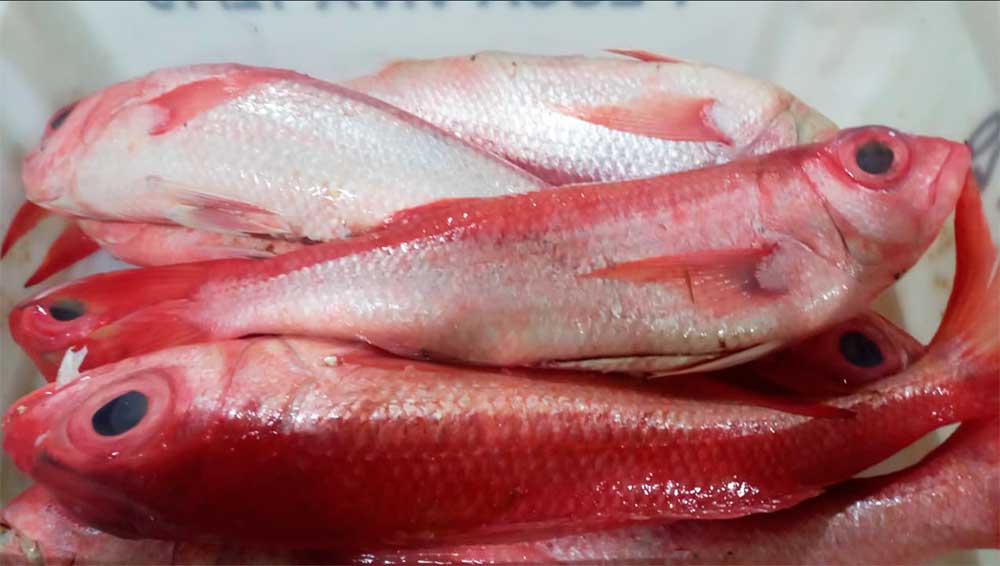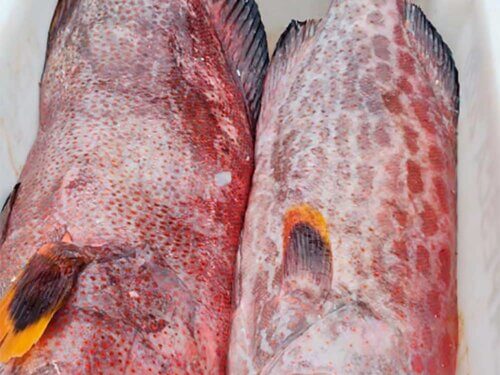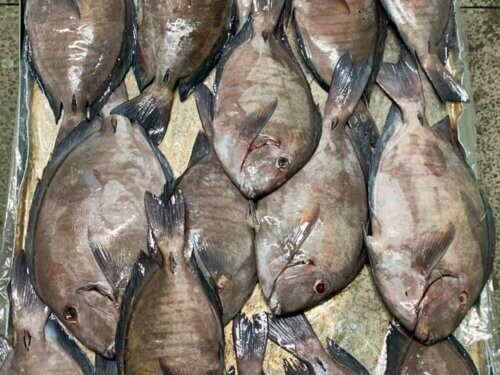Description
Queen snapper is distributed in continental shelf waters throughout the western Atlantic as far east as Bermuda, and from North Carolina south through eastern Brazil.
Queens are caught anywhere from 600 feet and deeper. They are a rare item for restaurant menus.
Dorsal spines (total): 10; Dorsal soft rays (total): 11; Anal spines: 3; Anal soft rays: 8. Head small; eye large; snout short. Maxilla covered with small scales; lower jaw slightly projecting. Dorsal and anal fin bases without scales; caudal fin deeply forked. Scale rows on the back running parallel with the lateral line. Back and upper sides deep pink to red; lower sides and belly pink; fins pink except the spinous portion of the dorsal fin; entire caudal fin brilliant red.
Size Facts
- Maturity: 15 inches
- Max length:: 39.3 inches
- Common length: 25.15 inches
- max. published weight: 11 lbs
The Yelloweye-Silk Snapperr is also known in Brazil as Pargo-mariquita.
Where can the Queen Snapper be found?
Queen snapper is found deeper than other snapper species in the western Atlantic and Gulf of Mexico. It appears to inhabit depths between 328 – 1640 feet (100 – 500 meters) based on angler observation. Little scientific information exists on the life history characteristics of queen snapper compared to other snappers. It reproduces throughout the year but, peak spawning is in October and November.
How does the Queen Snapper look like?
It is a dark red to pinkish red above its midline with a long, slender body. The dorsal fin is spiny with a deep notch in the middle. The tail fin is deeply forked.
How does the Queen Snapper behave?
Adults inhabit rocky bottoms and feeds mainly on small fishes and squids. They are abundant near oceanic islands. Small individuals are taken as by-catch in trawl fisheries. Marketed mostly fresh, sometimes frozen. Flesh of good quality.
Health benefits
The benefits of eating Queen Snapper are numerous. First of all, like most fish, Queen snapper fish is excellent for your heart, as it lowers the risks of cardiovascular diseases and brings down the amount of cholesterol in your blood. Secondly, the use of queen fish in your diet can help in the clarification of your vessels as it improves the circulation of blood, and reduces the chances of thrombosis, because of its omega-3 oils content. Thirdly, research shows that regular intake of queen fish can have a positive effect on your joints as it eases the symptoms of rheumatoid arthritis. Last but not the least, the queen fish can help in keeping your eyes healthy, bright and protected from degeneration which can cause blurry vision as one ages. This fish contains vitamin A in the form of retinol which enhances one’s vision at night.
Taste profile
Queen snapper are mild and sweet in flavor with a firm and delicate texture. They are known for their extremely large eyes. Due to the depth of their habitat they are considered to be one of the best snappers. They are very juicy and are a true delicacy. Queen snappers go great with leeks, tangerines, passion fruit, fresh fennel, coconut, mild herbs, and yellow tomatoes. This fish pairs well with rosé, Sauvignon Blanc, or amber beers.
Queen Snapper Videos
Nutritional facts
- Serving size: 5.85 oz
- Calories: 109 kcal
- Protein: 22.4 g
- Total Fat: 1.5 g






Reviews
There are no reviews yet.